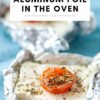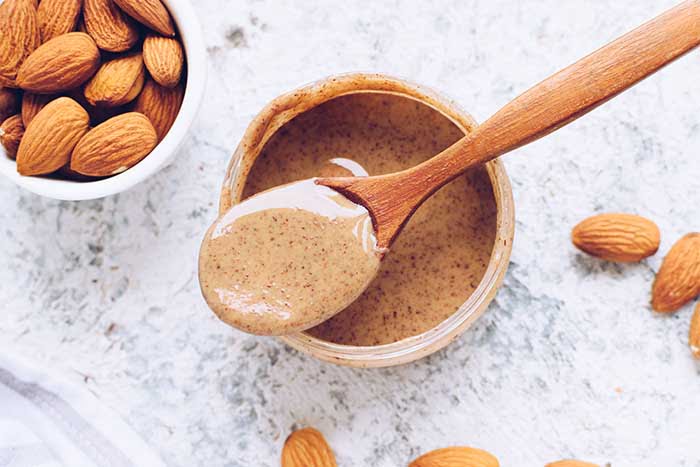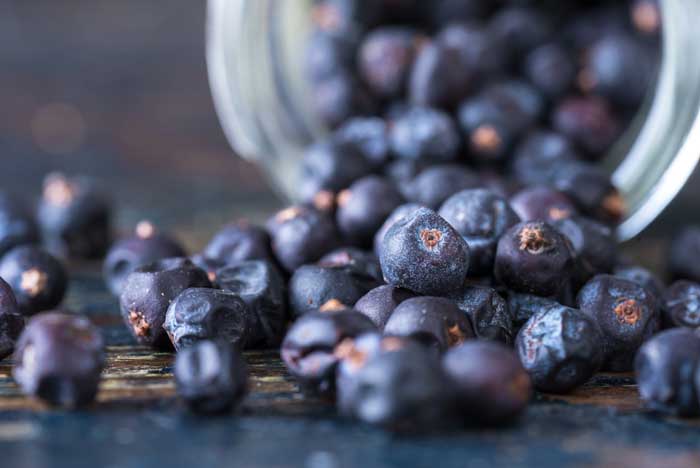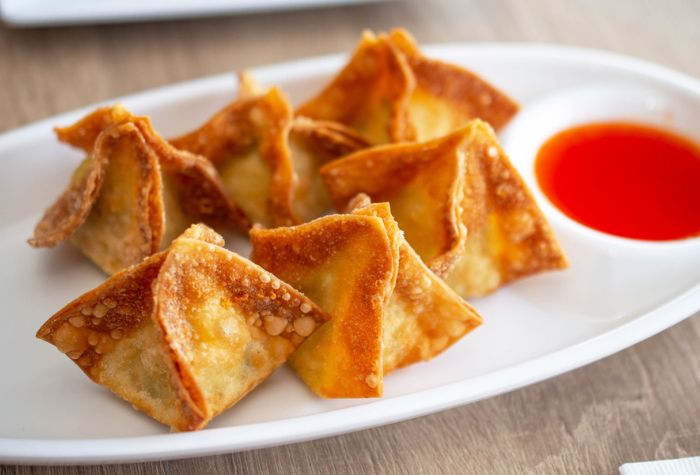Aluminum foil is perfect for grilling and barbecue, but how safe is it to use in your kitchen oven? Find out everything you need to know with our guide to foil do’s and don’ts.
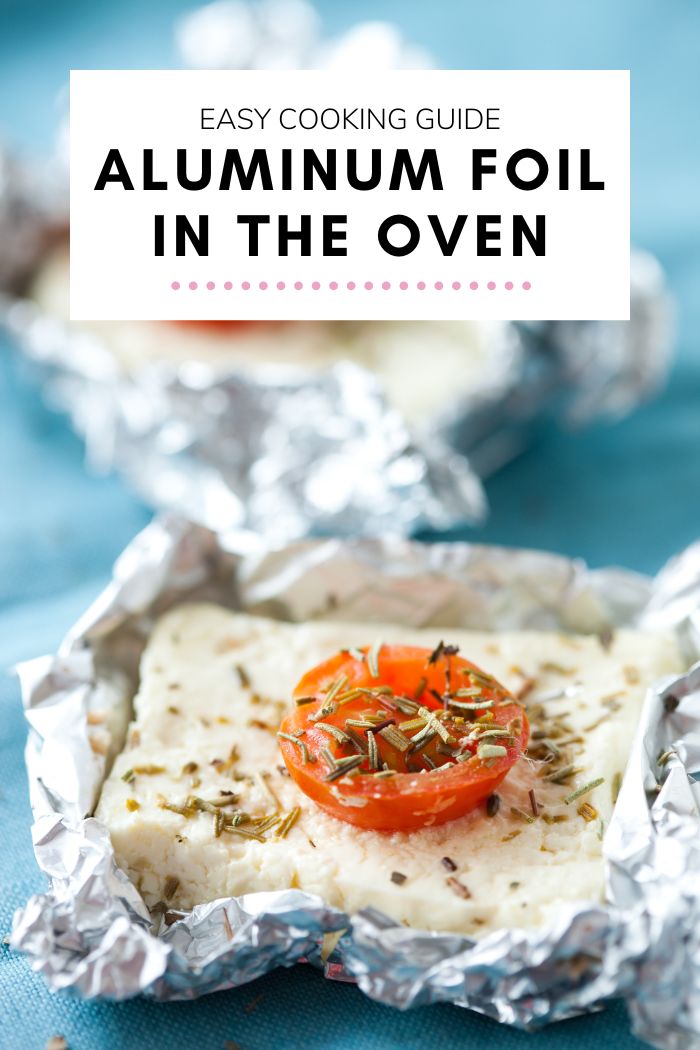
Baking Sheet
Aluminum foil is commonly used to line baking sheets, keeping the tray clean and guarding it against the corrosive effects of burned-on food and rust. Remove the used foil from the tray and throw it in the recycling bin. Since aluminum foil doesn’t tear without force, you don’t have to worry about it tearing on its own and letting the juices from food seep through onto the tray.
Oven Base
Using aluminum foil as an oven base is another common practice. However, it can easily become dangerous.
While it may considerably reduce the cleaning time by placing aluminum foil on the bottom of the oven, it can also increase the cleaning time by creating a bigger mess. Aluminum foil can stick to the oven if something greasy drips on it and become a nuisance to scrape off. Moreover, its reflective surface can reflect the heat upward, which can result in uneven cooking. It can also interfere with the flame and result in damaged oven parts.
Pros
- It catches dripping food.
- It helps target and concentrate heat towards the food.
- You can throw out the foil when you are done cooking, which cuts out the need to clean it extensively.
- It’s very pliable, so it can easily mold to the shape of your oven.
Cons
- The foil can stick to the surfaces and become a nuisance to scrape out of the oven and clean.
- The foil is a reflective surface, and this can reflect the heat off and onto the oven, which could damage the heating elements and cost you a lot of money in repairs.
- It is also not ideal because the reflective surface promotes uneven cooking.
- If you are using a gas oven, it can interfere with the flame.
- It can ignite a flame when it comes in contact with the oven walls.
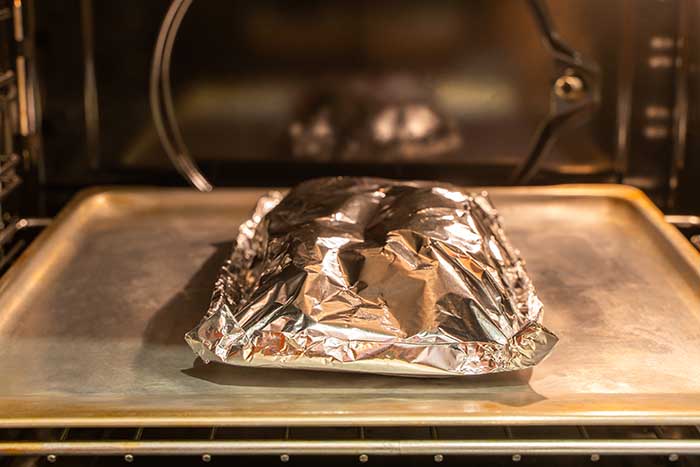
Lining the Bottom Rack
Using foil on the bottom oven of the rack is similar to using it on the bottom rack, meaning that there are risks involved. This method is also used for similar purposes, i.e., catching fat drippings and saving time on cleaning. However, while this method isn’t as dangerous as the previous method, it can still result in uneven cooking as it can hinder the air and heat flow in the oven.
Pros
- Protects the oven from getting dirty
- Saves time on cleaning
Cons
- It impedes airflow and hence the way the oven cooks. When the bottom rack is covered, then heat is also stopped from reaching the food unhindered.
- It causes uneven heating.
Wrapped Around Food
Using aluminum foil by wrapping it around food is a safe and useful method. It traps the moisture of vegetables and juices from meat, resulting in well-cooked food and a clean oven. However, at times the foil may stick to the food.
Pros
- It keeps the oven clean.
- it will help keep the food moist
Cons
- It could stick to your food in a way that you don’t want it to.
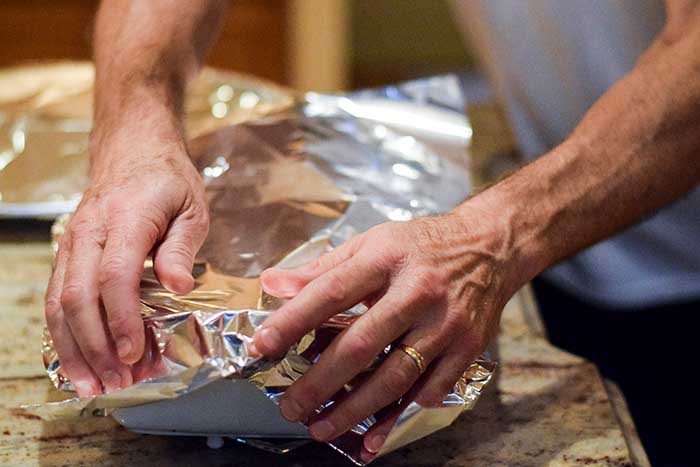
Directly on the Rack
This method involves placing a sheet of aluminum foil flat on the rack directly and putting the food on it. While this can help avoid drippings in the oven and hence reduce the cleaning time, it can also create a mess. If the foil is not strong enough, it will not support the food placed on it. Food can fall through the gaps in the rack as the foil bends.
Pros
- It keeps the oven clean and makes cleaning up after you are done cooking.
Cons
- It doesn’t support unstructured food.
Pros & Cons of Using Aluminum Foil in the Oven
Pros
- It makes cleaning easier by catching grease, juices, and anything that may seep out from food
- It can help retain moisture in food, especially in marinated meat and vegetables
- Reduces the need for using a baking pan
Cons
- It can reflect heat and damage the oven parts
- It can catch fire
- It can cause the food to cook unevenly
- Aluminum may contaminate the food, especially if the food is wrapped in foil
- It doesn’t work well for small or soft food items
- Tears easily
- It’s not biodegradable
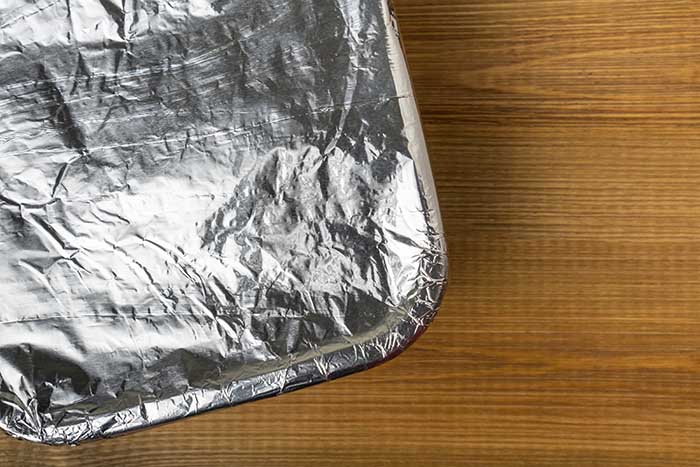
Best Aluminum Foil Substitutes
Parchment Paper
Parchment paper makes an excellent substitute for aluminum foil as it does not tear easily, is biodegradable, and is non-stick. You can use it in the oven the same way you use foil while avoiding the risk of ruining the oven parts.
Silicone Oven Liner
You can place these on the base of the oven. They are a safer choice than aluminum foil as they do not reflect heat. Silicone does not stick to the oven’s surface either. These liners are also easy on the pocket as they can be washed and reused.
Silicone is safe to use around food and does not contaminate it. Silicone liners are also thicker than parchment paper which means that they can take wear and tear.
Dutch Oven
Getting a Dutch oven is an excellent way to ensure food stays moist. Dutch ovens are heavy-duty with lids that hold in all the moisture inside. They’re safe to use on the stove or placed in the oven and make for an excellent aluminum foil replacement by never needing it again.
